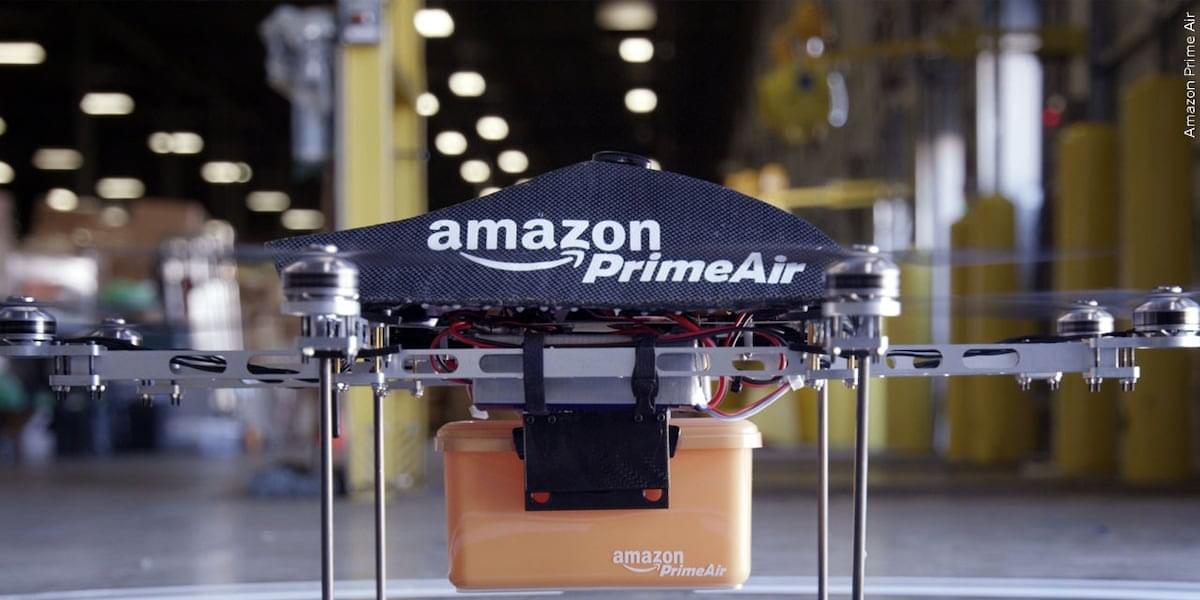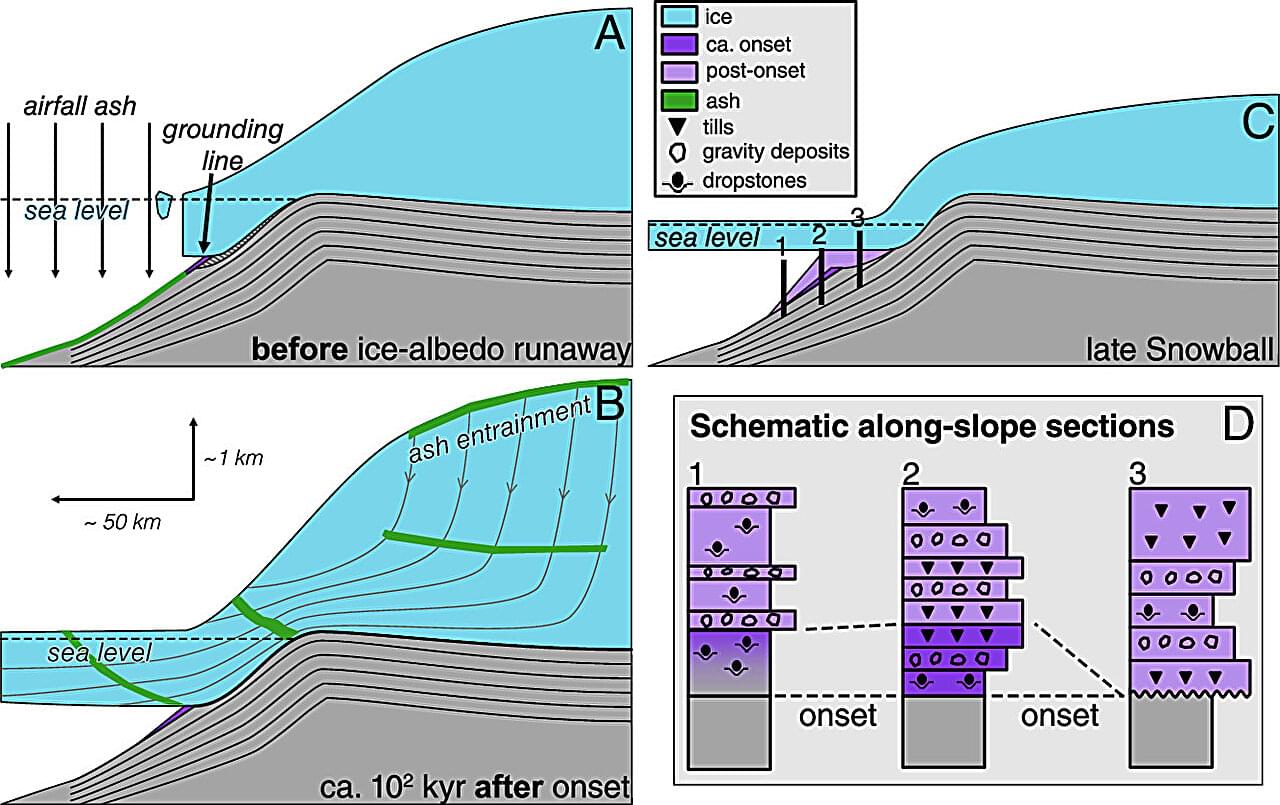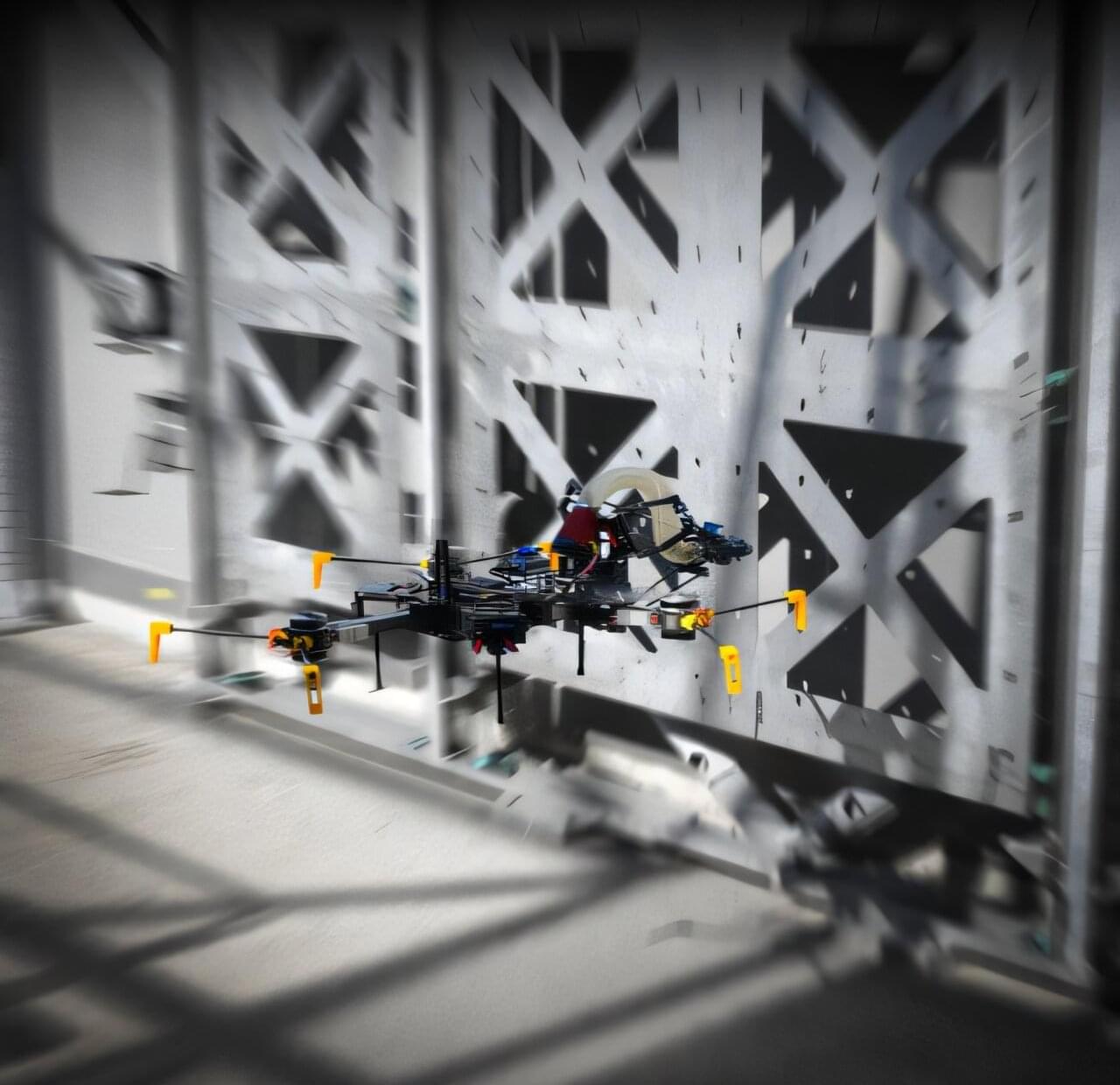Residents in part of Wyandotte County may soon be able to order Amazon packages for one-hour drone delivery.



A research team has developed a high-performance supercapacitor that is expected to become the next generation of energy storage devices. With details published in the journal Composites Part B: Engineering, the technology developed by the researchers overcomes the limitations of existing supercapacitors by utilizing an innovative fiber structure composed of single-walled carbon nanotubes (CNTs) and the conductive polymer polyaniline (PANI).
Compared to conventional batteries, supercapacitors offer faster charging and higher power density, with less degradation over tens of thousands of charge and discharge cycles. However, their relatively low energy density limits their use over long periods of time, which has limited their use in practical applications such as electric vehicles and drones.
Researchers led by Dr. Bon-Cheol Ku and Dr. Seo Gyun Kim of the Carbon Composite Materials Research Center at the Korea Institute of Science and Technology (KIST) and Professor Yuanzhe Piao of Seoul National University (SNU), uniformly chemically bonded single-walled carbon nanotubes (CNTs), which are highly conductive, with polyaniline (PANI), which is processable and inexpensive, at the nanoscale.
Autonomous battleships, autonomous defense technology, autonomous navy fleet, autonomous naval warships, autonomous patrol vessels, autonomous ship AI, autonomous warships 2025, battlefield AI systems, combat drone ships, cutting-edge naval AI, deep sea AI fleet, defense automation, drone fleet navy, drone operated ships, drone warships, future autonomous fleets, future navy AI, futuristic battle navy, ghost fleet AI, ghost fleet autonomous, ghost fleet drones, ghost naval ships, ghost warship fleet, high-tech naval fleet, military AI fleets, military autonomous ships, military drone ships, navy 2040 AI, navy AI automation, navy AI drone fleet, navy AI fleets, navy automation future, navy ghost drones, navy ghost ships, navy robotics systems, next-gen navy tech, robotic battle ships, robotic drone vessels, robotic navy future, robotic sea fleet, robotic sea patrol, robotic war navy, robotic warships AI, self-piloted navy, self-steering warships, stealth autonomous navy, stealth ghost fleet, stealth navy automation, tech navy evolution, unmanned AI navy, unmanned battle drones, unmanned combat vessels, unmanned ghost navy, unmanned military fleet, unmanned naval drones, unmanned navy boats, unmanned navy future, unmanned sea patrols, warship AI tech, warship drone AI, warship ghost fleet, warship robotics, warship self-navigation, autonomous ghost navy, AI powered navy, AI ship combat, AI ship navies, AI war vessels, AI warship combat, AI weaponized fleet, AI-controlled navy, AI-driven battle sea, AI-driven ghost fleet, AI-enabled navy future, autonomous ocean defense, autonomous war sea fleet, drone-based warships, drone-controlled navy, drone-led ghost fleet, drone-swarm navy, future military vessels, future sea combat, ghost navy technology, naval AI drones, navy AI future warfare, navy drone AI tech, navy drone patrol, navy ghost AI systems, robotic ship combat, sea battle AI systems, self-navigating warships, stealth AI navy tech, unmanned robotic ships, war automation navy, war ghost drones, war naval AI, war robot ships, weaponized drone navy, navy drone revolution, AI ocean patrols, underwater drone warfare, military ghost fleets, stealth unmanned warships, intelligent navy drones, navy robotics AI, robotic submarines AI, AI sea defense, future of naval AI, drone navy intelligence, unmanned stealth destroyers, AI-powered naval tech, smart navy ships, robotic destroyer fleet, next-gen ocean defense, deep sea robotics, drone guided torpedoes, sea AI weapons, unmanned marine fleet, combat sea robots, autonomous navy destroyers, unmanned military ocean tech, AI navy weapon systems, tech-driven warships, artificial intelligence warships, unmanned surface vessels, navy robotic patrol boats, AI-enabled destroyers, autonomous military defense, future ghost ships, navy drone control system, AI-controlled destroyers, unmanned combat surface fleet, ocean war robots, marine AI surveillance, robotic ocean patrols, future war drones, ghost ship navy, intelligent sea vessels, navy drone carriers, stealth autonomous ships, drone-enabled defense, underwater robotic navy, futuristic ocean fleet, drone-operated destroyers, AI-enabled sea robots, military robotics sea, next-gen destroyer drones, future stealth navy, navy robotics revolution, AI warfare at sea, unmanned maritime systems, AI naval monitoring, AI-controlled navy drones, autonomous destroyer squad, future naval swarms, robotic surface fleet, navy stealth AI, sea-based warbots, AI-controlled naval fleet, maritime ghost drones, automated navy systems, autonomous ship squadrons, ocean warfare automation, ghost destroyer drones, next-gen military fleets, automated sea defense, intelligent ship fleets, AI stealth destroyers, tech navy transformation, navy bots warfare, unmanned combat bots, autonomous naval innovations, AI warship patrols, automated ship navies, drone navy upgrades, future of robotic fleets, stealth robotics navy, AI ship fleets 2030, autonomous ocean warriors, naval robotics AI 2025, autonomous deep-sea ships, drone war technology, unmanned weaponized ships, futuristic ship fleets, next-gen ghost warships, ocean-based military AI, naval swarming drones, robotic future navy, navy drone revolution, AI ocean patrols, underwater drone warfare, military ghost fleets, stealth unmanned warships, intelligent navy drones, navy robotics AI, robotic submarines AI, AI sea defense, future of naval AI, drone navy intelligence, unmanned stealth destroyers, AI-powered naval tech, smart navy ships, robotic destroyer fleet, next-gen ocean defense, deep sea robotics, drone guided torpedoes, sea AI weapons, unmanned marine fleet, combat sea robots, autonomous navy destroyers, unmanned military ocean tech, AI navy weapon systems, tech-driven warships, artificial intelligence warships, unmanned surface vessels, navy robotic patrol boats, AI-enabled destroyers, autonomous military defense, future ghost ships, navy drone control system, AI-controlled destroyers.

When it comes to creating images of the earth from above, satellites, drones, planes and spacecraft are what tend to come to mind. But a startup called Near Space Labs is taking a very different approach to taking high-resolution photos from up high.
Near Space Labs is building aircraft that are raised by helium balloons and then rely on air currents to stay up, move around to take pictures from the stratosphere, and eventually glide back down to earth. On the back of significant traction with customers using its images, the startup has now raised $20 million to expand its business.
Bold Capital Partners (a VC firm founded by Peter Diamandis of XPRIZE and Singularity University fame), is leading the Series B round. Strategic backer USAA (the U.S. Automobile Association) is also investing alongside Climate Capital, Gaingels, River Park Ventures, and previous backers Crosslink Capital, Third Sphere, Draper Associates, and others that are not being named. Near Space Labs has now raised over $40 million, including a $13 million Series A in 2021.
Photographer Stephen Voss has been working on a project about data centers and recently travelled to Abilene, Texas to document the first data center built as part of the Stargate Project. When completed, it will be the largest data center in the world. Here’s a short drone video he took of the project:
“The place was mesmerizing and deeply unsettling,” Voss told me over email. “When finished, it’ll have the power demands of a mid-sized city and is on a piece of land that’s the size of Central Park.”
Unmanned aerial vehicles (UAVs), commonly known as drones, have already proved to be valuable tools for a wide range of applications, ranging from film and entertainment production to defense and security, agriculture, logistics, construction and environmental monitoring. While these technologies are already widely used in many countries worldwide, engineers have been trying to enhance their capabilities further so that they can be used to tackle even more complex problems.
Researchers at Pohang University of Science and Technology and the Agency for Defense Development (ADD)’s AI Autonomy Technology Center in South Korea recently developed a drone with foldable wings that could be more maneuverable than conventional drones. Their drone draws inspiration from the winged flying squirrel, a type of squirrel that uses loose flaps of skin attached from their wrists to their ankles to glide from tree to tree.
“The flying squirrel drone is inspired by the movements of flying squirrels, particularly their ability to rapidly decelerate by spreading their wings just before landing on trees,” Dohyeon Lee, Jun-Gill Kang and Soohee Han, co-authors of the paper, told Tech Xplore. “We initiated this research with the belief that, like flying squirrels, drones could expand their dynamic capabilities by utilizing aerodynamic drag.”

Scientists at the University of California, Berkeley, and Boise State University have found evidence suggesting that the Marinoan glaciation began approximately 639 million years ago and lasted for approximately 4 million years. In their study published in the Proceedings of the National Academy of Sciences, the group used drone and field imagery along with isotopic dating of glacial deposits to learn more about global glaciation events during the Neoproterozoic Era.
Prior research has shown that during the early days of the planet, during the Neoproterozoic Era, Earth underwent two ice ages. The first, known as the Sturtian glaciation, lasted approximately 56 million years and covered the entire planet with ice. Less is known about the second event, called the Marinoan glaciation. In this new effort, the research team set themselves the task of figuring out when it began and how long it lasted.
The work involved sending drones over a part of Namibia, where prior research has uncovered evidence of glacial activity during the Marinoan. This allowed the team to map sedimentary layers that were stacked up in a way that showed little vertical shift had occurred, which meant the glaciers did not move much during the time they were there. Additional field imagery helped confirm what the team found in the drone images.

New research led by Imperial College London and co-authored by the University of Bristol, has revealed that aerial robotics could provide wide-ranging benefits to the safety, sustainability and scale of construction.
The research examines the emerging field of using drones for mid-air material deposition in the construction industry —a process known as Aerial Additive Manufacturing (Aerial AM).
This technology addresses pressing global housing and infrastructure challenges using aerial robots equipped with advanced manipulators that can overcome the limitations of traditional construction methods and ground-based robotic systems.

Artificial Intelligence isn’t science fiction anymore—it’s a transformative force shaping the way we live, work, and innovate. In this groundbreaking documentary, explore the real-world applications of AI as it evolves from code into conscious collaboration. From autonomous flying drones to lifelike androids, we uncover how AI is pushing the boundaries of possibility.
The Revolution Of AI (2020)
✍️ Writers: Kyle McCabe, Christopher Webb Young.
⭐ Stars: Shivani Bigler, Jason Derenick, Barbara Grosz.
🎞️ Genre: Documentary.
🌍 Country: United States.
🗣️ Language: English.
🎭 Also Known As: Hyper Intelligence.
📅 Release Date: 2020 (United States)
Synopsis:
Join leading experts and visionary engineers as they guide us through the cutting edge of AI technology. Discover how robotic drones are learning to think for themselves, navigating unknown terrain during high-risk rescue missions. See how swarm technology is revolutionizing farming, and how robots are teaming up with humans to increase safety and productivity at work.
Watch as scientists work toward the next big leap—robots with self-awareness. These advanced machines are learning to understand themselves, make decisions, and adapt to the world around them. With androids now capable of human-like interaction, the line between machine and man continues to blur.